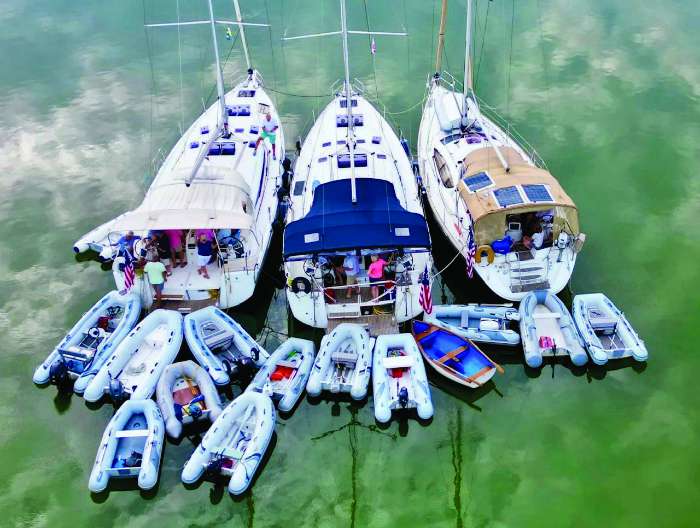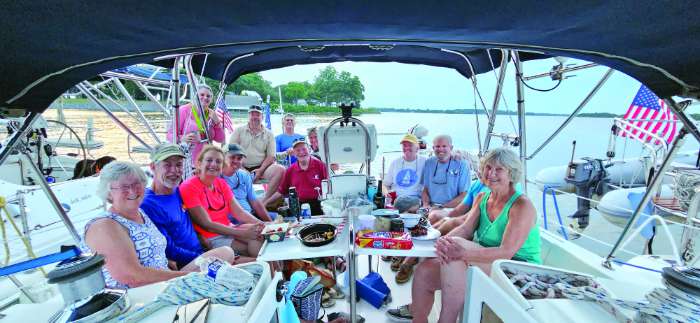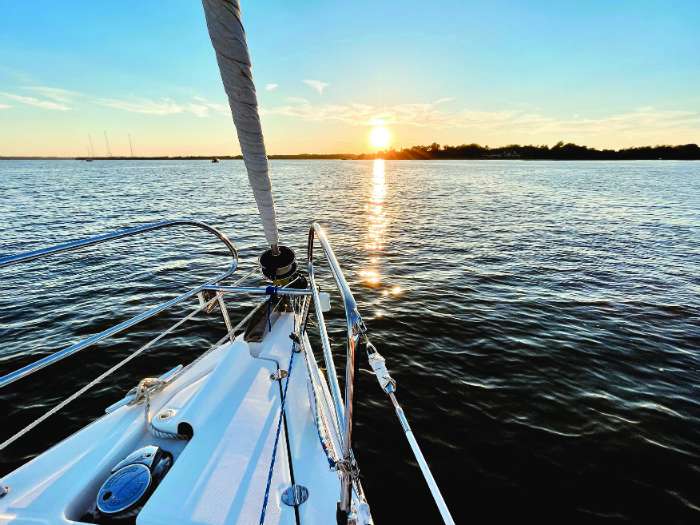Is It Too Early To Plan Your Sailing Cruise Schedule?
It’s never too early to plan your next sailing journey, and with spring just around the corner we can start imagining cruising trips for this season. Here are a few tips for a sailor who is new to cruising on the Chesapeake Bay.

Captains (and passengers) have different levels of expertise and expectations, and some are willing to take more risks; therefore, when planning a group excursion or a flotilla trip it’s best to identify a destination that allows for both anchoring in a creek or taking a slip at a local marina. Is the goal to seek some quiet time or to socialize with friends? Answers to these questions may lead to different destinations.
Joining a sailing club may help you. Members are eager to share experience and local knowledge. This allows you to increase your in-depth expertise.
Select destinations that are within a reasonable distance from your home port. For instance, a 40- to 50-nautical mile trip equates to an eight- to 10-hour trip. For beginning cruises, I don’t think you’d want to be sailing at night.

Irrespective of skill level: Update your charts and familiarize yourself with the navigation software. Besides using the commercial software that comes with the multifunctional display, other options are OPENCPN, a chart plotter navigation software (which can be downloaded for free on your laptop). Obviously, paper charts are still a valuable, low-tech, and very useful option. Before you depart, ascertain that your most important systems work (especially GPS, compass, engine) and that you have enough fenders and dock lines. Always bring an extra set of clothes.
If you plan a two-day or weekend trip, ask yourself whether you want to anchor or reserve a slip in a marina to stay overnight. The proximity of restaurants at the marina may be a deciding factor unless you want to rekindle your hidden ‘Martha Stewart’ talents. Don’t forget that food and its enjoyment are part of the cruising experience, thus perhaps make a menu in advance if you’re not eating out.

As far as marinas: There’s so much choice (some advertise but others don’t and are hidden gems). For instance, Onancock, VA, is a nice destination but has relatively few spots; I would call ahead and make a reservation. Solomons, MD, is a popular spot and has several options.
Last and not least: Check the weather. Don’t trust your apps all the time. The weather can change quickly, and the software may not be updated in time. I find the buoy observations from NOAA and the USCG weather channels (VHF channels) still the best tools. Take advantage of observing the sky and clouds and check your barometer if you have one.
A Selection of Excellent Anchoring Locations
Shaw Bay (38°51’ N 076°11’ W) Wye River
Whitehall Bay (38°59’ N 076°25’ W) Near mouth of Severn River
Langford Creek (39°07’ N 076°09’ W) Chester River
Boby Owl Cove (38°44’ N 076°16’ W) Broad Creek, Choptank River
Cherry Island (38°33’N 076°18’ W) Little Choptank River
Smith Creek (38°07’ N 076°24’ W) Potomac River
Mill Creek (37°47’ N 076°19’ W)
Great Wicomico River
About the author: Capt. Patrick G. De Deyne has been sailing for more than 25 years in different geographical locations and is the current secretary of Club Beneteau Chesapeake Bay (CB2).




